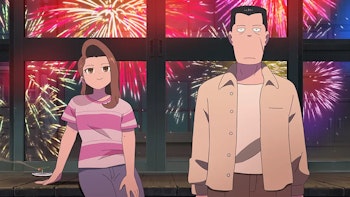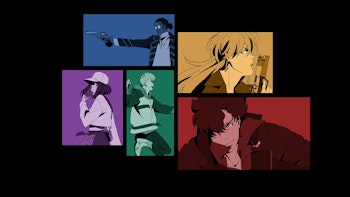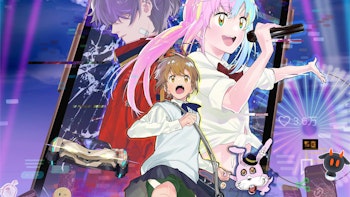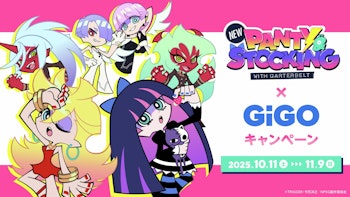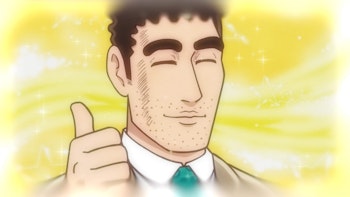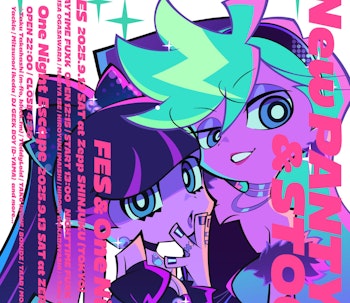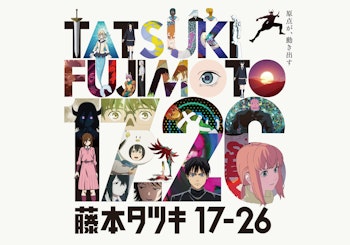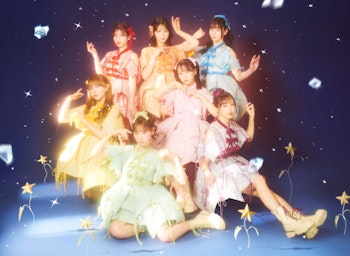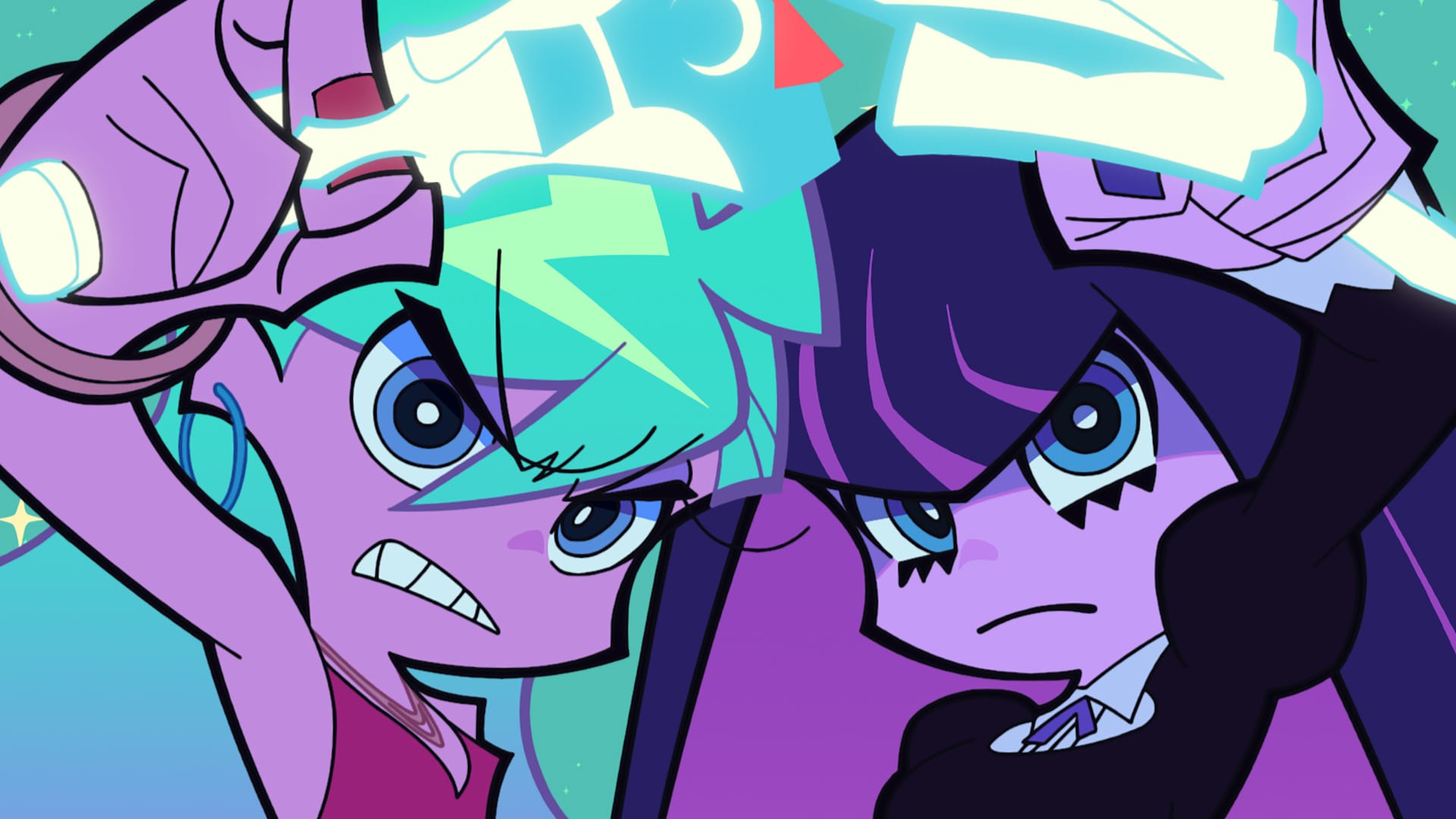
Starting on 27 August, 2025 a series of special podcasts episodes featuring conversations between some of the team behind New PANTY & STOCKING with GARTERBELT began airing. It’s our great pleasure to provide English translations of these conversations with permission and approval from STUDIO TRIGGER and FlyingDog. Today we're back with Episode 2, Part 2 following up from the previously published Episode 2, Part 1 in case you missed it.
You can also catch up with the conversation by checking out the previously published Episode 1, Part 1 and Episode 1, Part 2 translations.
If you would like to read along to the original Japanese audio, the podcast can be heard via Spotify.
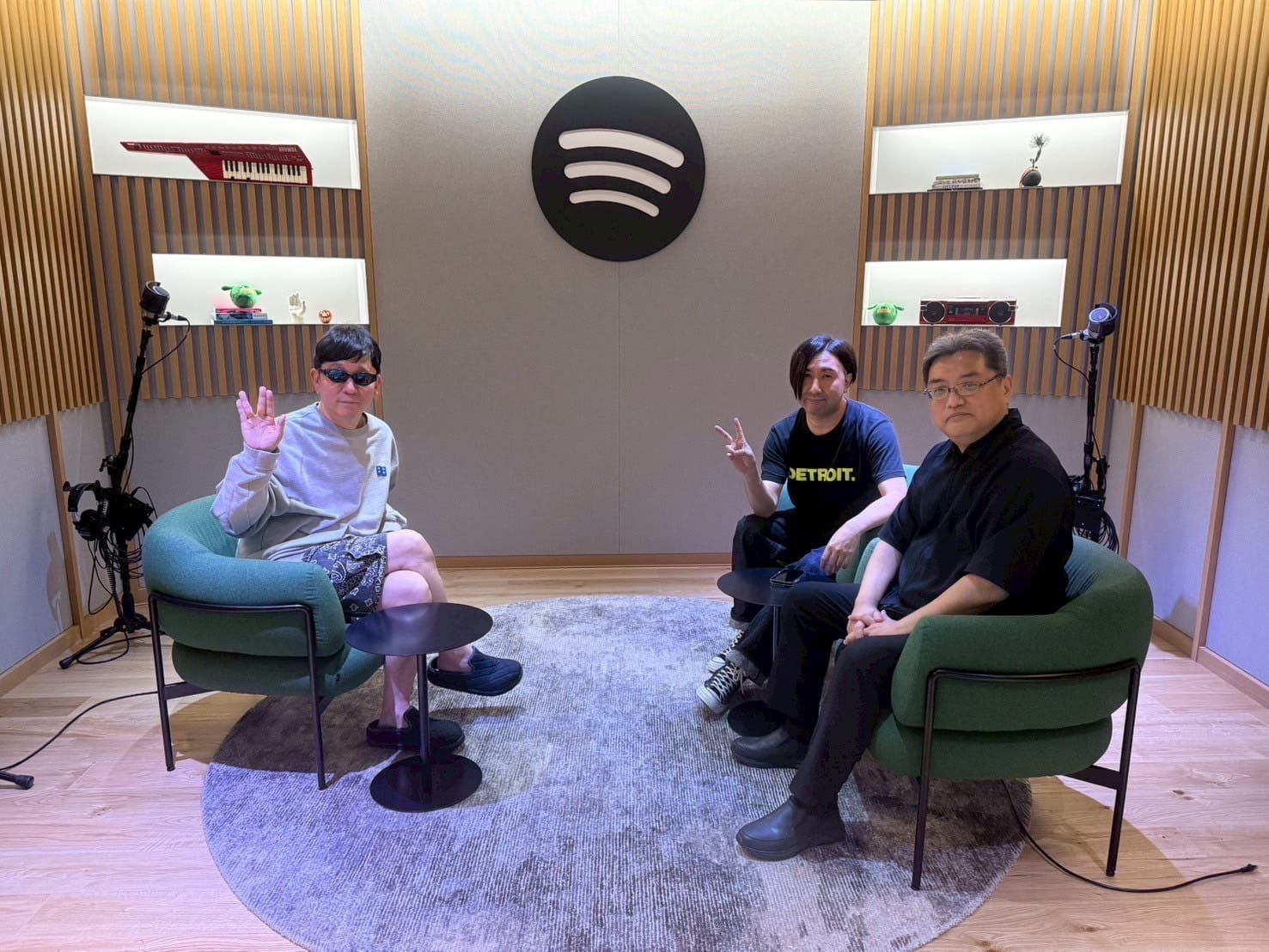
☆Taku Takahashi: This next question is for both Imaishi and Wakabayashi. In NEW PANTY & STOCKING, both the content and the style feels strongly influenced by Western animation. Are there particular elements you love, or techniques you consciously incorporated this time? – This one's a deep-cut.
Hiroyuki Imaishi: Pretty deep – The time we were most influenced by Western animation, cartoons, would have been 15 years ago when we first made the original series. The main staff were all really into them back then. We've honestly not updated our knowledge much since then.
☆Taku: Oh really?
Imaishi: But at this point, it's honestly kind of become part of our foundation. In these past 15 years too, American cartoons have started taking on a lot of influence from Japanese anime too. So you get cartoons animated with a Japanese-style look, which, to us, isn't anything bad. But we wanted that sense of dissonance when watching Western cartoons, so maybe that's why there's been less for us to take in. Western creations that originate from Japan, we already know the ins-and-outs of it all. So we started watching Western animation for something different – that uniqueness that only comes about because of cultural differences. That was the point for us initially, what we were looking for was something we couldn't think of ourselves.
☆Taku: And how about you Wakabayashi?
Hiromi Wakabayashi: Japanese anime tends to have a “wet” atmosphere, both in story and character. The Western cartoons we loved 15 years ago all felt very “dry.” They felt like they were made by people living in low-humidity locations.
☆Taku: As in the weather?
Wakabayashi: Yeah, the overall works felt very dry, not wet. There could be gags and dirty jokes, but they were never wet. You have a laugh, and a moment later you've moved on – that's the dry feeling I'm talking about. Back then we wanted to see how much of that dryness we could capture while mixing in Japan's strengths in dramatic, wet storytelling. We deliberately tried constraining ourselves, and it felt fresh. We tried to carry that same spirit this time around too.
☆Taku: So back then with so much to absorb, I'm sure it was a lot of fun – now that the era has changed, was it difficult to keep motivated?
Wakabayashi: We discussed it a little in the first episode of the podcast, but this is our first time seeing a continuation to an Imaishi-directed project. So that in itself is a fresh experience for us.
☆Taku: That's true.
Wakabayashi: So with this being a new challenge for us, the fact that this is a continuation is probably the most exciting part. Things like how bound we are to the original story, how can we betray the original, things like that are what make it interesting to us this time around.
☆Taku: One of the things I've been feeling this time around is how much the inserts of music feels like American films, or even HBO-style dramas. Did you take influence from overseas on the music side too?
Imaishi: I'm pretty sure we did with the music.
Wakabayashi: Yeah. Also, last time our sound director was in charge of a lot of the inserts, but this time I handled all the episodes myself. So the person editing the music was different. I love movies and Western dramas and have always watched them, so I was very conscious about how I was infusing that sense into New PANTY & STOCKING. It's my personal taste, timings that you don't normally hear in Japanese anime, and the kinds of music we were putting in – I was paying a lot of attention on those fronts.
☆Taku: This one's a simple question, but I heard Wakabayashi actually used Adobe Premiere to lay down music to picture, and I remember thinking how wild that was. Is it normal for the series composer/head writer to do that kind of music-syncing work?
Wakabayashi: [laughs] Hell no.
Imaishi: I don't think there's anyone else who does that. A series composer handling music? Usually those worlds don't collide. People who write usually don't have a deep understanding of music, that's what makes him so strange. [laughs]
It's seriously weird, he'll also mess around with colors and background, but he won't draw key animation.
Wakabayashi: I can't animate.
☆Taku: That's exactly what makes it interesting, especially in the first episode, where music fills every gap. It should feel overwhelming, but instead it flows like a DJ mix.
Wakabayashi: I'm really happy to hear that.
Imaishi: Typically with anime the theory behind music placement is cleanly splitting tracks scene by scene and matching everything. But in films and Western dramas, a single track can run across several scenes – it seems like it wouldn't fit, but it really matches the emotional undercurrent. I've always appreciated that. Sometimes a scene you you think will run a while will end suddenly, and sometimes you'll mash tracks to connect them – not that we did that in the first episode.
Wakabayashi: Not in the first episode, but we did cram in all the early vocal tracks because I really couldn't resist myself.
Imaishi: Right. We did the mash in episode two, the demon sisters and the angels' song. The first episode also reflects my taste, though. I like having no empty spaces, filling all the gaps with sound.
Wakabayashi: I volunteered to handle the music in Premiere; I did Cyberpunk: Edgerunners that way too. I think my taste overlaps with Imaishi’s. We both want the music running constantly, filling the spaces. After I lay down the tracks, the first person to react is the director, Imaishi. So every time I’m left thinking how do I make him laugh
Imaishi: [laughs]
☆Taku: I see, I see.
Wakabayashi: He'll ask if I'm seriously packing the songs that tightly – I’ll first cram things to the limit, then show him. If he laughs, we lock it; if he hesitates, we sit together and swap, asking about this track or that track. But if I place things in the normal way, I know he won’t be happy.
☆Taku: Right.
Wakabayashi: In the first episode's battle, we stuffed in Teddy’s track, your track, and others – maybe three vocal songs, probably not in the way they were originally intended. It’s over the top.
Imaishi: Extravagant, yeah.
Wakabayashi: You could run the whole bit with one track, but we burned through three big songs there. We were going wild.
Imaishi: Going wild alright.
Wakabayashi: But I figured Imaishi would love it that way. That’s basically how I developed every episode.
☆Taku: Interesting. Moving onto the next question, and this might be the kind of thing media can’t ask – and this definitely came from a fan.
If you were to make another PANTY & STOCKING sequel, what conditions would you feel are necessary on the creative side? There's a lot of angles here, creative readiness, etc. In short, people want a sequel.
Imaishi: Ah, I see. The necessity on this one is… motivation. [laughs]
Yeah, definitely the motivation to do so.
☆Taku: Last time you said when you do serious shows, you start wanting to make comedy. So after doing two or three serious ones, would you want to go back?
Imaishi: That’s pretty likely.
☆Taku: And you said the previous ending wasn’t a cliffhanger, that you put it all out there. Do you feel this time around that if it ended here, that’d be fine?
Wakabayashi: I kind of feel that way about all of Imaishi’s shows. From the start, with PANTY & STOCKING, we aimed for a series that could run forever. The plan was a “fake cancellation” ending, so if we got to make more, we could just revive it; we built a world where anything can happen. We were saying back then, “Let’s do it to Season 10! Let’s do a movie!” So even now, we feel we gave it our all, but if there’s a chance, I’d happily keep making it forever, even as a retirement side gig. [laughs]
Imaishi: With more serious shows, you use up all the juiciest elements of the characters and world throughout its runtime. You have to, or it won’t be good. But PANTY & STOCKING doesn’t really have that necessity; it’s not about building drama layer by layer. It’s comedy. So we always do everything we can each time, but for the next one, it's fine if we do it, fine if we don’t. That was my feeling last time. With serious shows, you get to a place where you can’t make another. With PANTY & STOCKING, you don’t. That’s PANTY & STOCKING. And that doesn’t mean we half-ass it, we wanted a style where we go all the way, every time, but also, we can do it again, or not.
☆Taku: With PANTY & STOCKING, I get the feeling that the staff shuffles episode by episode, and Imaishi acts like a general director while still jumping in here and there. With a lot of younger staff involved, could there be cases where you hand an episode over entirely?
Imaishi: That depends on the moment. If there’s someone we can entrust it to at that time, we do. If not, I'll handle it myself. That’s just how PANTY & STOCKING is.
☆Taku: Did the original idea start from discussions between you two?
Wakabayashi: There were like five of us: Imaishi, me, Yoh Yoshinari, the Little Witch Academia director, plus character designer Nishigori, our president Otsuka, and Koyama. We took a celebratory trip right after Gurren Lagann’s final episode aired. That night, even though it was a celebration trip, we ended up talking about our next anime idea and everyone started cooking up pitches.
I said, “Next I want to make some ridiculous anime about two girls who hunt ghosts,” and Imaishi’s like “Uh-huh,” grabs paper and pen, “Okay, okay, and then?” I said, “Their names are Panty and Stocking – like underwear names,” and he’s “Huh, huh,” sketching the characters as I talk: “Panty and Stocking. And there’s a priest named Garterbelt,” and he’s like, “Whoa, what happens in this?” Everyone, including Yoshinari, started tossing ideas around, and it became a two-to-three-page proto-proposal. Since we’d gotten that far, we figured we’d submit it as a proposal when we got back.
☆Taku: Go on...
Imaishi: At first we thought the next director would be Otsuka.
Wakabayashi: Right, we wanted Otsuka to direct it.
Imaishi: We were thinking up a project for him. Then it started looking really fun, and when I handed it over like I’ll draw, you direct, he said, “You direct it.”
Wakabayashi: That’s right.
Imaishi: On Gurren Lagann, I was director and Otsuka was assistant director, so we thought we’d swap next – he’d direct and I’d assist. I actually wanted to play more than draw. Doing a whole series is hard, so I asked to just do one or two ultra-dense episodes.
Wakabayashi: Meanwhile, on our side, Otsuka and Nishigori were a little apart, talking about a cute-girls baseball, sports-drama anime because Otsuka loves baseball.
☆Taku: Same room, different corner, got it.
Wakabayashi: So while they were getting excited about that, we got excited about a project Otsuka didn’t even want to make [laughs]
Imaishi: Exactly.
Wakabayashi: It’s truly is an extremely TRIGGER origin story.
☆Taku: So if a different pitch had come out, maybe there’d be a totally different Otsuka-directed show.
Wakabayashi: Up to a point, meetings progressed with Otsuka as director. Then one day he said, “This one isn’t for me.”
Imaishi: He did.
Wakabayashi: He wasn’t that into cartoons, or the over-the-top violence and dirty jokes, I remember him saying that’s more Imaishi’s thing, and offered to be assistant director again. So we ended up with the same lineup as Gurren, with Nishigori on character designs, etc. [laughs]
Imaishi: That’s ultimately how it all went down.
☆Taku: Again, this all feels like a band -- someone strums a chord, then suddenly someone brings the drums in.
Imaishi: Definitely band-like, yeah.
Wakabayashi: It really hasn’t changed. Like, “How does Panty fight?” “With guns.” “Her underwear turns into guns.” Then Koyama’s like, “Since it’s underwear, the back should be lace,” and so on. “They ride a giant pink Hummer and smash through town,” and Yoshinari sketches exactly that – this huge Hummer plowing through Japanese suburb walls. “Like this! Like this!” Then Koyama goes, “If their names are underwear, what would their car be?” “It’s gotta be see-through, sheer.” I came up with character names, Koyama applied that logic to props and pitched ideas. The names we came up with that very night stuck for the main characters and even on the props.
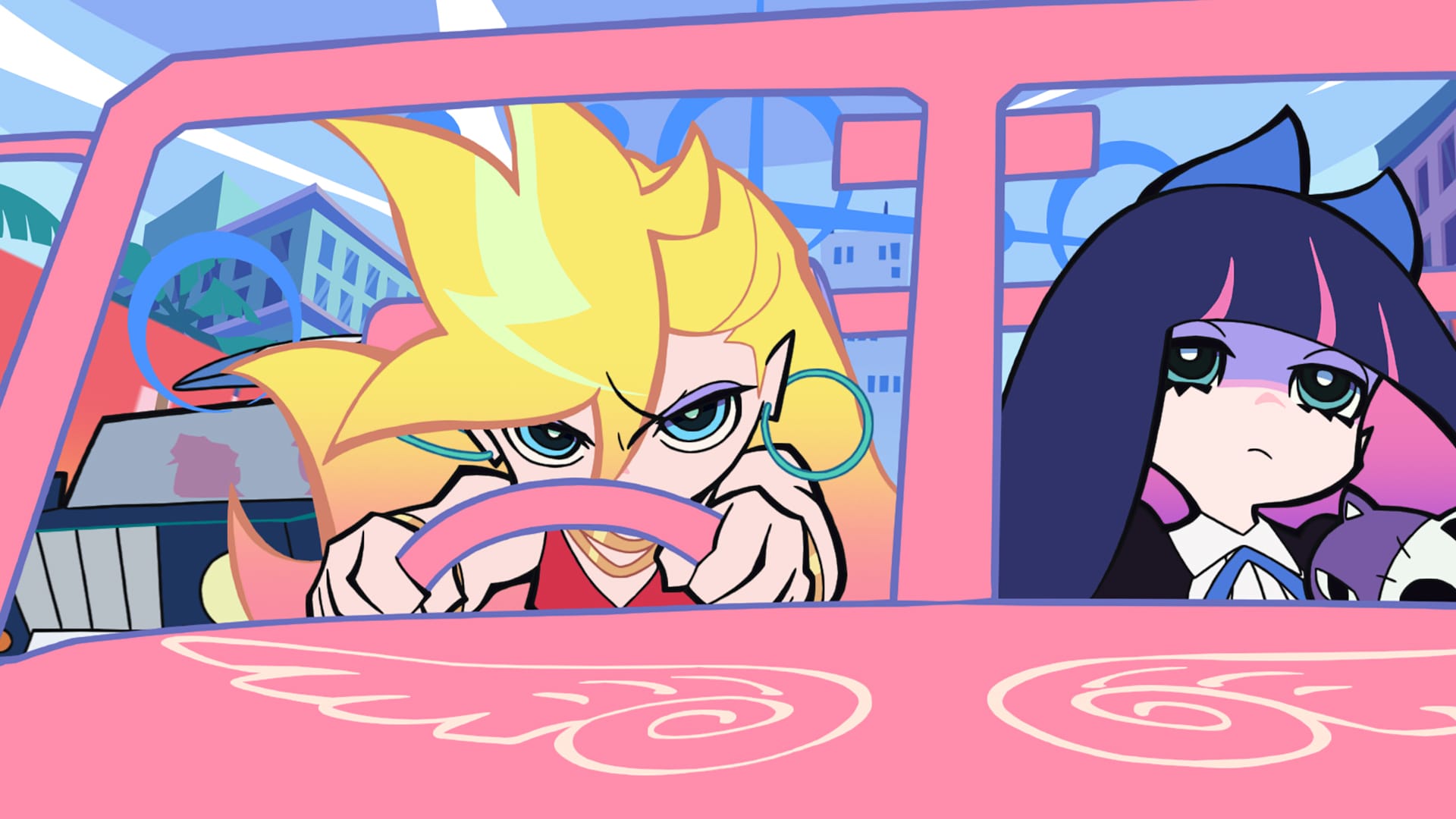
Imaishi: They all stayed as-is.
Wakabayashi: It was a project where we wanted to preserve that kind of raw impulse in anime form. If we’d gone back and thought it through properly, the whole thing would’ve collapsed.
Imaishi: Overthinking would’ve definitely killed it.
Wakabayashi: It was all about turning the ideas we blurted and laughed over into a real production.
☆Taku: I see.
Wakabayashi: That’s just how it was.
☆Taku: Incredible story – do you know if those sketches from that night still exist?
Wakabayashi: I think so, almost definitely.
Imaishi: We kept a lot, with some probably making it into proposal docs.
☆Taku: I’d love to see them someday, like at an exhibit.
Wakabayashi: A PANTY & STOCKING exhibition.
Imaishi: Let’s make it happen.
☆Taku: Final question for today. PANTY & STOCKING was born out of that initial creative impulse. Within the new series, do you each have a favorite episode? It’s a tough one, like picking a favorite song off an album. I love them all, including ones I wasn’t as involved in. You don’t have to pick just one, but are there any favorites?
Imaishi: Well, only up to episode 9 has aired so far.
☆Taku: Right, and future ones might change things.
Imaishi: Given that, before 9… maybe episode 8's “Fa Fa F*ck.”
☆Taku: Excellent choice.
Wakabayashi: Yeah. I naturally have strong feelings for episode 9 and the ones I handled, but putting those aside. The main story episodes #1, #6, and the ones that lead into the climax, I worked with Imaishi to seriously, jokingly figure out what PANTY & STOCKING should be now. I feel we nailed it, so I hope you’ll look forward to the climax.
☆Taku: I can’t wait.
Wakabayashi: Please look forward to it.
☆Taku: I’m scared I’ll say something I shouldn’t.
Imaishi: [laughs]
☆Taku: There’s so much I want to talk about [laughs]
Wakabayashi: There are episodes with Taku stories too.
☆Taku: Yep, those too, but, well…
Wakabayashi: Either way, there's still a few very heartfelt episodes to come. Beyond picking a specific episode, a big memory this time was building the overall structure while working with younger TRIGGER staff. There's now like 10 or 20 people like that now. Drawing out their ideas and fitting them into PANTY & STOCKING’s story to make the series, that’s a huge part of the value to this work, and of TRIGGER as a studio.
☆Taku: With a comedy like PANTY & STOCKING, did you feel the differences in sensibility, or the overall generational gap when working together?
Imaishi: We did.
Wakabayashi: Oh, very much. The humor sweet spots are different, and the culture they’ve consumed is different, so the gaps are big. For example, when I reference a film, they haven’t seen it. Stuff our generation would absolutely know, just isn't. It’s normal for them not to know. That gap is interesting too. Learning about what they have seen, that's what makes it interesting.
Imaishi: Our generation is pretty contrarian, younger folks not so much.
☆Taku: I get that impression too, they're more straightforward.
Imaishi: They’re straightforward.
☆Taku: In our day there was the concept of cool and uncool. Maybe that still exists, but less so. Young people can like both the cool stuff and the fun stuff. That feeling of if it's good, it doesn't matter if its cool. Is it similar in anime production?
Imaishi: Yeah. With us, we loved mega-blockbusters but half-mocked them, too. That cynical edge to it all. Thinking something can be super cool, but also super dumb. Younger folks don’t always share that. If something’s cool, it’s cool. That’s a difference I feel.
☆Taku: So if you pitched something as a parody, they might just think it's cool?
Imaishi: Right. That kind of mean-spirited goofing might not resonate as much. But they’re not negative about it.
Wakabayashi: Not at all.
Imaishi: Not at all.
Wakabayashi: They’ll just say that it was a genuinely good story. Among creators our age, we’d just own that we did something great while trading slightly snarky takes. Younger folks will just tell you how they felt about the episode very straightforwardly, even if they didn't understand it. [laughs]
☆Taku: Right, right.
Wakabayashi: Our generation would never admit if we didn't get something.
Imaishi: Yeah, saying that felt like losing.
Wakabayashi: You'd always claim they didn't make it clear enough, because it could never be your own fault for not getting it. Now though, people will be very quick to admit when they didn't understand something.
☆Taku: Hearing you two, I’m reminded of Brief’s line in the first episode about updating with the times. Maybe you feel that way in the studio, which is why that line exists.
Imaishi: Hmm.
Wakabayashi: Brief is, in the end, an old-head, so him saying that, but then not actually updating, is the joke. Meanwhile, the “new angels” are characters from a slightly different generation for PANTY & STOCKING – they value different things. That came out of TRIGGER being a multi-generation studio making things together.
☆Taku: Got it. Huge thanks to everyone who sent in questions. Director Imaishi, Wakabayashi, what did you think of this week’s questions overall?
Imaishi: A lot of them felt fresh. I’m pretty nervous on radio and not great at it, but today I felt really relaxed, it was fun.
☆Taku: Same here, I had a blast. Thank you so much. How about you, Wakabayashi?
Wakabayashi: Lots of new angles from the questions, and honestly, being able to look back on the production together with the director and Taku after the fact, that’s something we don’t often get to do.
☆Taku: True.
Wakabayashi: That might’ve been what made me happiest.
☆Taku: We got into stuff you don’t usually hear in the media. I’m part of the team myself, but I’m also a huge fan of the studio, so hearing from you two felt like I had a front-row seat.
NEW PANTY & STOCKING with Garterbelt is currently airing. And we’ve got a very important announcement:
On Saturday, September 13, we’re holding the largest talk & music event in PANTY & STOCKING history. The daytime and evening shows will be at Zepp Shinjuku, titled “New PANTY & STOCKING FES.” And the late-night show will be at ZERO TOKYO, it’s the same venue but switches names late at night, titled “New PANTY & STOCKING: One-Night Escape.”
In episode 3 of the podcast, we’ll be joined by Yackle, who also worked on the New PANTY & STOCKING soundtrack, to talk plenty about behind-the-scenes of the anime and the music. Please look forward to it.
Today’s hosts were myself, Taku Takahashi, with Director Imaishi and Wakabayashi. Thank you!
Hiroyuki Imaishi & Hiromi Wakabayashi:Thank you very much.
☆Taku: See you next week!
That's a wrap on the English translation for Episode 2 of This is New PANTY & STOCKING, Check back soon for Episode 3!
